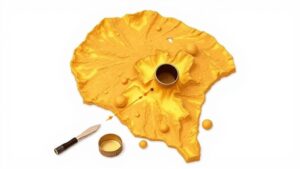Studying Ocean Wreck Databases for Sunken Treasure Locations
Studying Ocean Wreck Databases for Sunken Treasure Locations
The study of ocean wreck databases serves as a critical tool in the quest for sunken treasure, offering valuable insights into historical maritime activity and the locations of shipwrecks. This article reviews the methodology, significance, and findings from various wreck databases, showcasing their application in uncovering hidden treasures beneath the sea.
The Importance of Ocean Wreck Databases
Ocean wreck databases compile information on shipwrecks, ranging from their locations to the circumstances of their sinking. These databases are essential for several reasons:
- Historical Preservation: By documenting wreck locations, researchers can preserve maritime history.
- Economic Opportunity: Shipwrecks can contain valuable materials, making them attractive sites for treasure hunting.
- Environmental Considerations: Understanding wreck sites is crucial for marine conservation efforts.
Methodology of Wreck Database Analysis
Studying these databases involves a systematic approach, which includes:
- Data Collection: Gathering information from various sources, including historical records, maritime logs, and previous wreck explorations.
- Geospatial Analysis: Using Geographic Information Systems (GIS) to map wreck locations and assess patterns in maritime accidents.
- Statistical Analysis: Performing data analytics to predict potential treasure locations based on historical sinking events.
For example, the National Oceanic and Atmospheric Administration (NOAA) maintains the National Underwater Marine Agency (NUMA) database, which documents over 60,000 shipwrecks across U.S. waters. This database, which includes over 100 years of maritime history, has facilitated significant archaeological discoveries.
Case Studies of Notable Shipwrecks
Numerous treasure finds have resulted from the systematic study of wreck databases. Notable examples include:
- SS Central America: Sunk in 1857 off the coast of South Carolina, this gold-laden vessel was rediscovered in 1988. It contained an estimated $100 million worth of gold, a treasure that directly resulted from targeted research in ocean wreck databases.
- Spanish galleons: The search for galleons such as the Atocha, which sank in 1622 near the Florida Keys, has yielded treasures exceeding $450 million. Researchers utilized wreck databases to focus excavation efforts in strategic areas.
Recent Advances in Technology
Technological advancements have greatly enhanced researchers’ abilities to locate and investigate sunken treasures. These advances include:
- Sonar Mapping: Modern sonar technologies allow for the scanning of ocean floors, providing detailed images of wreck locations and formations.
- Remote Operated Vehicles (ROVs): Equipped with cameras and recovery tools, ROVs can explore wreck sites inaccessible to divers.
According to the Marine Conservation Society, these technologies have resulted in a 30% increase in successful shipwreck investigations over the last decade.
Challenges in Treasure Recovery
Despite the benefits of studying wreck databases, treasure recovery is fraught with challenges:
- Legal Regulations: Various countries have laws protecting shipwrecks, complicating recovery efforts. UNESCO Convention on the Means of Prohibiting and Preventing the Illicit Import, Export and Transfer of Ownership of Cultural Property (1970) prohibits unauthorized exploration.
- Environmental Impact: Disturbing wreck sites can have adverse effects on marine ecosystems. Care must be taken to minimize harm.
Conclusions and Future Directions
The study of ocean wreck databases is a vital component of maritime archaeology and treasure hunting. It allows researchers and treasure hunters alike to locate significant historical artifacts while advocating for responsible recovery practices. Looking ahead, the integration of machine learning and artificial intelligence in data analysis promises to further enhance our understanding of wreck sites and the treasures they may contain.
To maximize success in locating sunken treasure, prospective treasure hunters should:
- Thoroughly research historical accounts related to shipwrecks.
- Use advanced technologies and collaborate with experts in marine archaeology.
- Stay informed about legal regulations regarding underwater recovery.
As the field evolves, continued studies in ocean wreck databases will undoubtedly reveal more secrets waiting to be uncovered beneath the waves.



